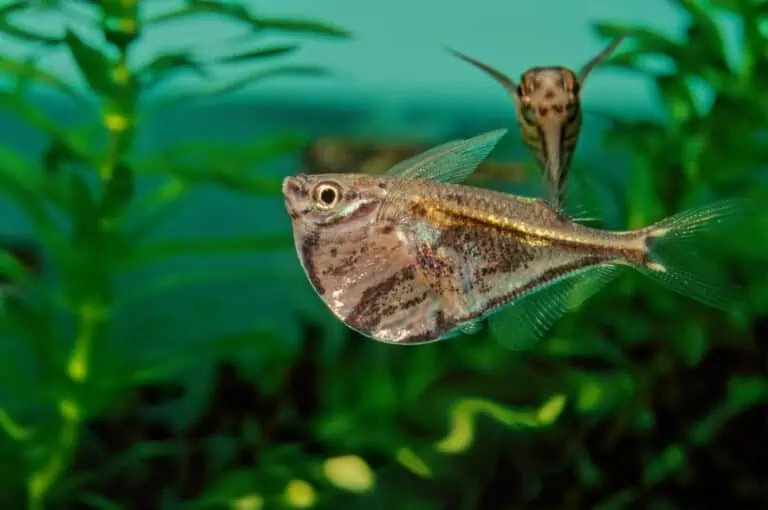
Size
In captivity, Hatchetfish typically grow to a length of 2.6 inches. The wild-caught fish is about 1 1/2 inches smaller than the farmed fish.
Physical Appearance
Hatchetfish have flattened, deep bodies on both sides. The eyes are large, and the tails are thin. The silver hatchetfish, a cousin relative, is frequently confused with the common hatchetfish. The Silver hatchetfish is slightly larger than the typical hatchetfish species, though.
Habitat
They are primarily from south and Central America (Southern tributaries of the Amazon River basin), but they also come from Brazil in South America. They can be found in areas that are heavily populated with aquatic plants in their natural habitat. The common hatchetfish is typically found at the water’s surface in the natural, however may occasionally retreat if they feel threatened or in danger.
Keeping as Pet

Tank Size
Hatchetfish aren’t particularly active, but they do need a place to swim freely because they fare best in a group of at least six other fish.
The tank should hold at least 20 gallons. They tend to jump out of the water, so I advise a large tank with lots of surface area.
Water Parameters
Despite the fact that hatchetfish are a rather durable aquarium fish. To ensure their success in your aquarium, you must maintain certain water conditions.
75 to 80 degrees Fahrenheit should be the appropriate water temperature.
The appropriate pH range must be maintained because hatchetfish like slightly acidic water with a pH between 6.0 and 7.5. Changes in pH cause the fish to exhibit anxious behavior.
They want slightly hard water, so the hardness of the water should range from 2 to 15 dGH.
Hatchetfish are poisonous to ammonia and nitrites, which are bad for their general health. Install filters to prevent the buildup of ammonia and nitrite, and test your water frequently.
Nitrates: Hatchetfish can withstand modest concentrations of nitrates, but excessive concentrations can be harmful to their health.
Diet
They will eat live food, fish flakes, flake foods, and frozen food when they are in captivity. Basically, any food that is present on the water’s surface. It is advised to provide them protein-rich food on a daily basis, such as brine prawns, blood worms, daphnia, etc. Additionally, you can periodically feed them vegetables like blanched spinach, zucchini, and cucumber.
Tank Mates
Hatchetfish are calm fish that are generally reserved. They ought to be kept with fish that get along with them and are neither aggressive or antagonistic towards them. Keep them in groups of six or more since they are schooling fish.
The fish are more content when the school is larger. Hatchetfish compatible tank mates include:
Tetras
Rasboras
Corydoras
Gouramis
Dwarf cichlids
Dwarf shrimps
Other hatchetfish
Table





